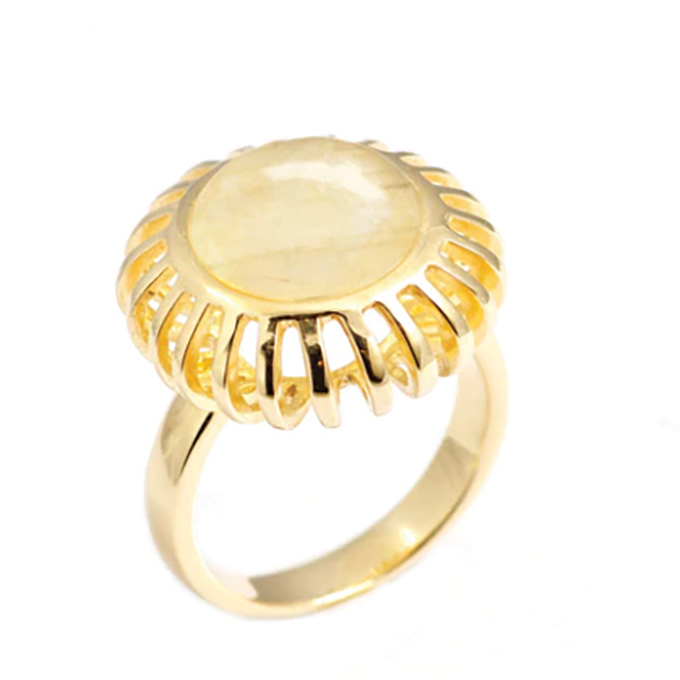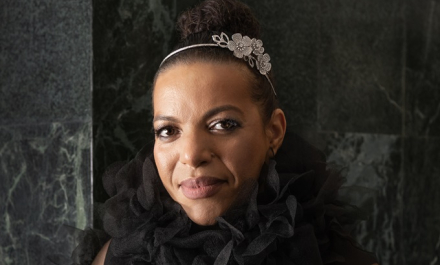Building a brand anchored on sustainability may sound daunting but it is the first crucial step to making socially responsible enterprising a norm in the jewellery industry, shared Jeanine Hsu, founder and creative director of sustainability-driven brand, niin.
This article first appeared in the JNA July/August 2024 issue.
After finishing her fashion degree in London in 2001, Jeanine Hsu, founder and creative director of niin, realised the scale of waste in the fashion industry and that something had to change. It was during a trip to the Philippines, where she watched fishermen’s wives collect driftwood from the sea, that Hsu’s passion for sustainability was cemented.
“I was struck by this positivity in the community and how precious rare finds offered by the ocean are,” noted Hsu. “I made it my mission to recycle discarded or waste materials and craft them into unique designs.”
Back then, Hsu approached one of her mentors who produces jewellery for the likes of LVMH about the possibility of using recycled gold but was met with scepticism. By the time niin’s first fine jewellery collection was launched almost a decade after, one of this mentor’s biggest clients made having a Responsible Jewellery Council (RJC) certificate a prerequisite to continue working with him.
“In the end, I got my way. Eight years later, but better late than never,” shared Hsu. “I am proud to say that all of niin’s fine jewellery pieces are RJC-certified and made with recycled 18-karat gold.”
Hsu founded niin in Hong Kong in 2009. At present, the brand sells to more than 30 locations around the world and the goal is to grow even bigger globally over the next five years. It also relocated to Bali, Indonesia in 2022.
The path to sustainability, however, is not a walk in the park. According to Hsu, being sustainable does not equal efficiency as it is more time-consuming and expensive, hence it is not always a first choice.
“That is, until enough of us push for it and make it the norm. It starts with education. It is our responsibility as designers and industry leaders to think outside the box and be changemakers for the well-being of our planet and its inhabitants,” she added.
Journey to sustainability
At niin, every raw material used in the jewellery pieces has a purpose beyond aesthetics. For instance, “wood is grounding, shells are purifying, and quartz is awakening, and more,” explained Hsu.
Its production methods, meanwhile, involve sourcing materials with minimal environmental impact like recycled metals, Fair Trade-gemstones and lab-grown diamonds (LGDs). It likewise prioritises eco-friendly methods such as reduced water and energy usage, and ethical labour practices, shared Hsu.
To further support its sustainability agenda, niin has been collaborating with Carat* London on its range of so-called Gentle Diamonds or LGDs.
Hsu explained, "We feel very strongly about the impact that mined diamonds have on the planet in terms of energy and water use as well as the welfare of workers and we believe that our customers feel the same way, so we will only use LGDs in our collections going forward."
Supporting local communities by paying fair wages for artisans and sharing transparent supply chains to ensure traceability and accountability are also at the brand’s core.
Niin likewise uses smaller workshops and employs artisans to create designs. Hsu noted, “We always ask whether the piece can be made more mindfully. If we do not provide artisans with the materials, we ask them for certificates of origins,” she added.
Sustainability Diary
Turkish jewellery group joins RJC
The Turkish Jewellery Exporters' Association is now a member of the Responsible Jewellery Council (RJC). As an RJC member, the 1,348-strong association is expected to align its operations with the council’s standards on human and labour rights, environmental impact, mining practices and product disclosure.
Fenton x Gemfields offer ‘collection with a conscience’
Gemfields and London-based fine jeweller Fenton launched an exclusive six-piece capsule collection featuring reused gold and ethically mined emeralds from Gemfields’ Kagem mine. It includes a tennis bracelet in recycled 18-karat white gold with Zambian emerald baguettes and lab-grown Solar Diamonds®; among other pieces.
GIT prepares sustainability standards for Thailand-based companies
The Gem and Jewelry Institute of Thailand (GIT) will introduce simplified sustainability standards within the year to help local enterprises develop green credentials that are increasingly requested by international clients. As smaller businesses may not yet qualify for Responsible Jewellery Council (RJC) membership, the guidelines will enable them to still engage in an increasingly eco-friendly marketplace as suppliers of RJC members, noted GIT Deputy Director (Technical) Thanong Leelawatanasuk.











